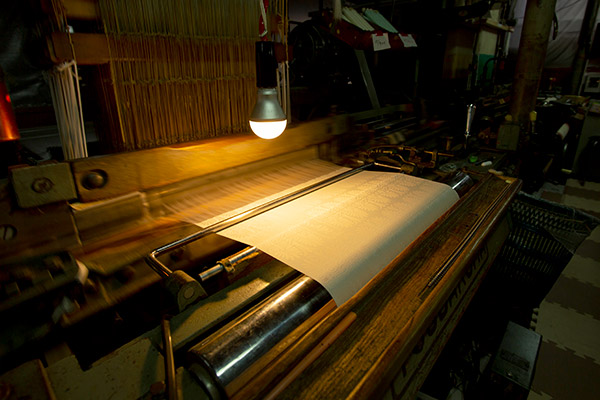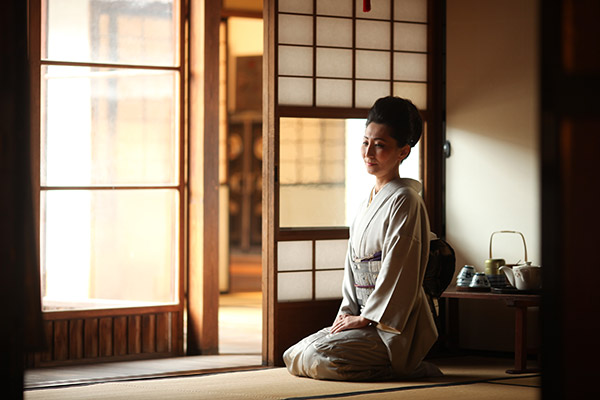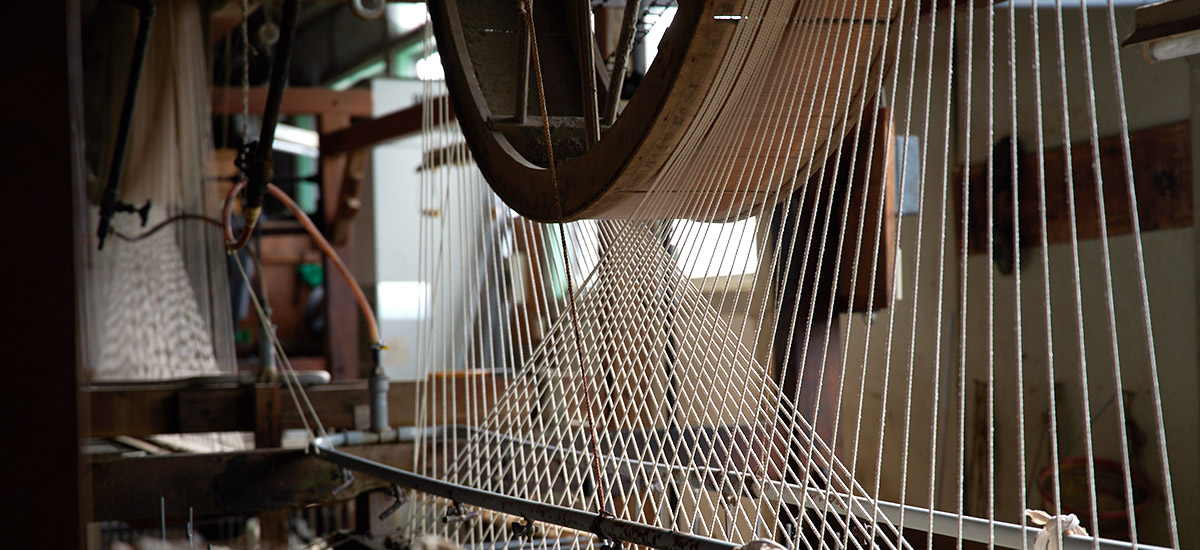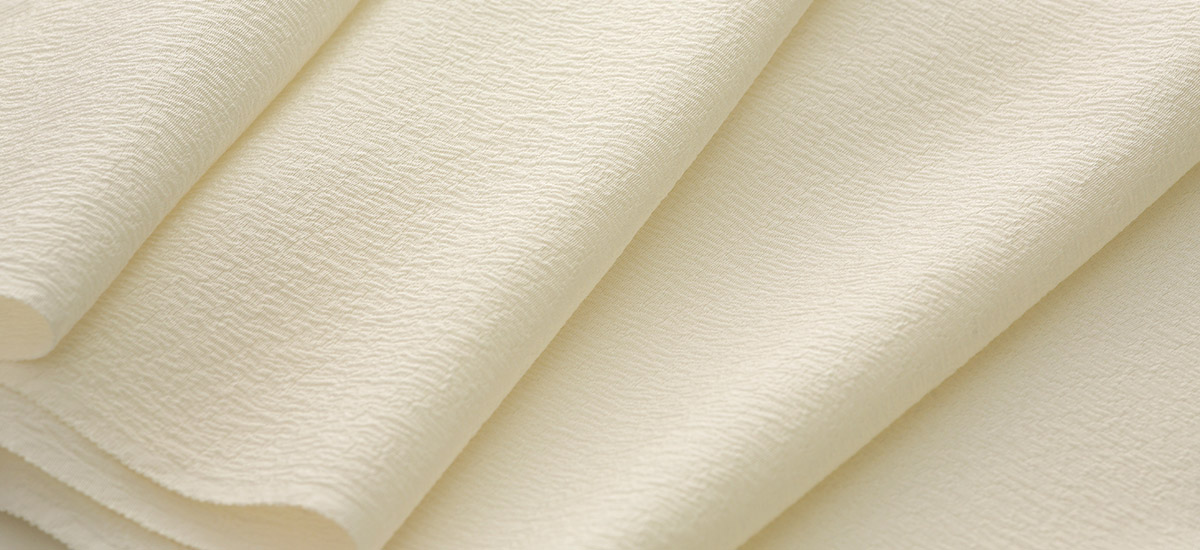
Tango Chirimen is the general term for piece-dyed woven fabrics featuring uneven crimps called “shibo” on their surface, made through refining in Tango and using hard-twisted thread for the weft. Tango Chirimen is guaranteed to be top-quality and will only be stamped with the brand mark after rigorous inspections.

Chirimen (crepe) originally refers to silk fabric using untwisted raw silk threads for the warp and strong twisted threads for the weft, alternately driving in one or two hard-twisted threads, then refined to produce crimps on the cloth’s surface. Woven fabrics were mainly made of natural fibers before chemical fibers were made. Among them, raw silk has long fibers and is suitable for hard-twisting, making it the best material for Chirimen. However, the development of fiber technology led to the progress of chemical and synthetic fibers. Tango also developed its own unique techniques, making it possible to weave fabrics close to the original Chirimen texture with fibers other than raw silk.
The weaving and refining done in Tango using Chirimen techniques (such as hard-twisting yarns) are now called Tango Chirimen to promote the area’s comprehensive production.



Weaving fabrics using twisted yarn is a very challenging technique. It requires complex senses only attainable through experience. This includes adjusting the warp’s tension and weft’s rotation speed, among many other tasks. However, the Tango Chirimen weavers have accumulated techniques for centuries. They continue to weave fabrics that cannot be seen anywhere else, freely maneuvering the twisted threads as if they were an extension to their bodies.
The core of this is the textile’s three-dimensional depth. The unique shibo (crimps) born from the threads trying to untwist gives a three-dimensional depth to a normally flat woven fabric. There are countless weft types depending on the combination, such as different ways to match threads and the number of twists. Tango’s weavers have created many expressions on textile surfaces through all sorts of combinations.

Tango has been producing silk fabrics for over 1300 years.
In the Edo period, the birth of the Omeshi Chirimen in Nishijin, Kyoto, resulted in Tango textiles being called “backwater silk,” plummeting sales. Harvests were also poor during this time, making the people’s lives full of hardship. Several of our ancestors journeyed to Nishijin in search of a means to overcome this crisis and brought back the Chirimen weaving techniques. They succeeded in producing Chirimen in Tango with unique “shibo” (crimps on the textile’s surface), marking the birth of Tango Chirimen. Our ancestors then generously spread their teachings all over Tango.
During the last 300 years, the weavers of Tango have created several mainstream products according to the kimono fashion scene of each era. They created all sorts of textures through twisting and weaving, including the translucent Kumi Chirimen, the Nuitori Chirimen, which weaves colored, silver and gold threads, and the elegant and illustrious Donsu Chirimen. As a result, Tango became Japan’s number one silk fabric producer even before the war, with its share amounting to about 70% of the entire country. And so, the weavers of Tango continue the challenge of expanding the world of textiles.

Tango’s representative Wet Hatcho Twisting Machine takes full advantage of sericin’s water solubility and drips water on the raw silk threads while twisting them. Large quantities of water are needed for the refining that creates the crimps. The water used for this is from the rain and snow falling in the Tango region.
Dryness is the biggest enemy of raw silk threads, causing them to snap during weaving. Tango’s climate is called “Uranishi,” which is moderately humid, making it the perfect environment for producing silk fabrics.